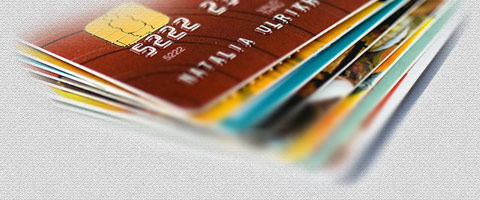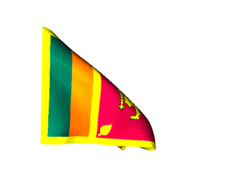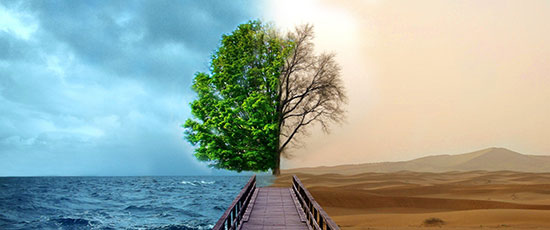Sri Lanka
Set in the Indian Ocean in South Asia, the tropical island nation of Sri Lanka has a history dating back to the birth of time. It is a place where the original soul of Buddhism still flourishes and where nature's beauty remains abundant and unspoilt.




Few places in the world can offer the traveller such a remarkable combination of stunning landscapes, pristine beaches, captivating cultural heritage and unique experiences within such a compact location. Within a mere area of 65,610 kilometres lie 8 UNESCO World Heritage Sites, 1,330 kilometres of coastline - much of it pristine beach - 15 national parks showcasing an abundance of wildlife, nearly 500,000 acres of lush tea estates, 250 acres of botanical gardens, 350 waterfalls, 25,000 water bodies, to a culture that extends back to over 2,500 years.
This is an island of magical proportions, once known as Serendib, Taprobane, the Pearl of the Indian Ocean, and Ceylon. Discover refreshingly Sri Lanka!




Monday to Friday
Banks 9:00 a.m. to 3:00 p.m. Monday to Friday
Every Full-Moon is public holiday in Sri Lanka.

 |
GALLE LITERARY FESTIVAL |
| (late Jan/early Feb). Eminent local and international wordsmiths and culture vultures descend on Galle. |
 |
INDEPENDENCE DAY |
| Celebrates Sri Lanka’s independence on February 4, 1948, with parades, dances and games. |
 |
GALLE/JAFFNA MUSIC FESTIVAL |
| Three-day music festival held in Galle and Jaffna on alternate years and featuring an impressive line-up of local and international folk musicians, dancers and other performers. |
 |
SINHALESE AND TAMIL NEW YEAR |
| Coinciding with the start of the southwest monsoon and the end of the harvest season, the Buddhist and Hindu New Year is a family festival during which presents are exchanged and the traditional kiribath (rice cooked with milk and cut into diamond shapes) is prepared. Businesses close, rituals are performed, new clothes are worn and horoscopes are cast. April 13 is New Year’s Eve; April 14 is New Year’s Day. |
 |
VESAK POYA |
| The most important of the Buddhist poyas, this is a threefold celebration commemorating the Buddha’s birth, enlightenment and death, all of which are traditionally thought to have happened on the day of the Vesak Poya. In addition, the last of the Buddha’s three alleged visits to Sri Lanka is claimed to have been on a Vesak poya day. Lamps are lit in front of houses, and pandals (platforms decorated with scenes from the life of the Buddha) are erected throughout the country. Buses and cars are decorated with streamers, and free food (from rice and curry to Vesak sweetmeats) is distributed in roadside booths (dansal). Meanwhile, devout Buddhists visit temples, meditate and fast. The day after the Vesak Poya is also a public holiday. Vesak also marks the end of the Adam’s Peak pilgrimage season. The sale of alcohol, meat and fish in public restaurants is prohibited for a six-day period around the poya day, though hotels and guesthouses may be able to circumvent this when serving their own guests. |
 |
POSON POYA |
| Second only in importance to Vesak, Poson Poya commemorates the introduction of Buddhism to Sri Lanka by Mahinda, marked by mass pilgrimages to Anuradhapura, while thousands of white-robed pilgrims climb to the summit of Mihintale. |
 |
ESALA POYA |
| Celebrates the Buddha’s first sermon and the arrival of the Tooth Relic in Sri Lanka. The lunar month of Esala is the season of festivals, most notably the great Esala Perahera in Kandy, Sri Lanka’s most extravagant festival. There are also festivals at Kataragama, Dondra and Bellanwila (a southern Colombo suburb) and a big seven-day celebration at Unawatuna, during which thousands descend on the village and beach. | |
 |
KATARAGAMA FESTIVAL |
| Festival at Kataragama during which Hindu devotees fire-walk and indulge in various forms of ritual self-mutilation, piercing their skin with hooks and weights, and driving skewers through their cheeks and tongues. | |
 |
HIKKADUWA BEACH FESTIVAL |
| (July/Aug) Three-day beach bash with international DJs. |
 |
NIKINI POYA |
| Marks the retreat of the Bhikkhus following the Buddha’s death, commemorated by a period of fasting and of retreat for the monastic communities. |
 |
DUSSEHRA |
| (Sept/Oct) Also known as Durga Puja, this Hindu festival honours Durga and also commemorates the day of Rama’s victory over Ravana. |
 |
DEEPAVALI |
| (late Oct/early Nov) (P) The Hindu Festival of Lights (equivalent to North India’s Diwali), commemorating the return from exile of Rama, hero of the Ramayana (holy scripture), with the lighting of lamps in Tamil households, symbolic of the triumph of good over evil, and the wearing of new clothes. | |
 |
WORLD SPICE FOOD FESTIVAL |
| (late Oct/early Nov) Ten days of culinary events at assorted venues around Colombo. |
 |
Il Poya |
| Commemorates the Buddha’s ordination of sixty disciples. |
 |
CHRISTIAN NEW YEAR’S EVE |
| (31 Dec) |


